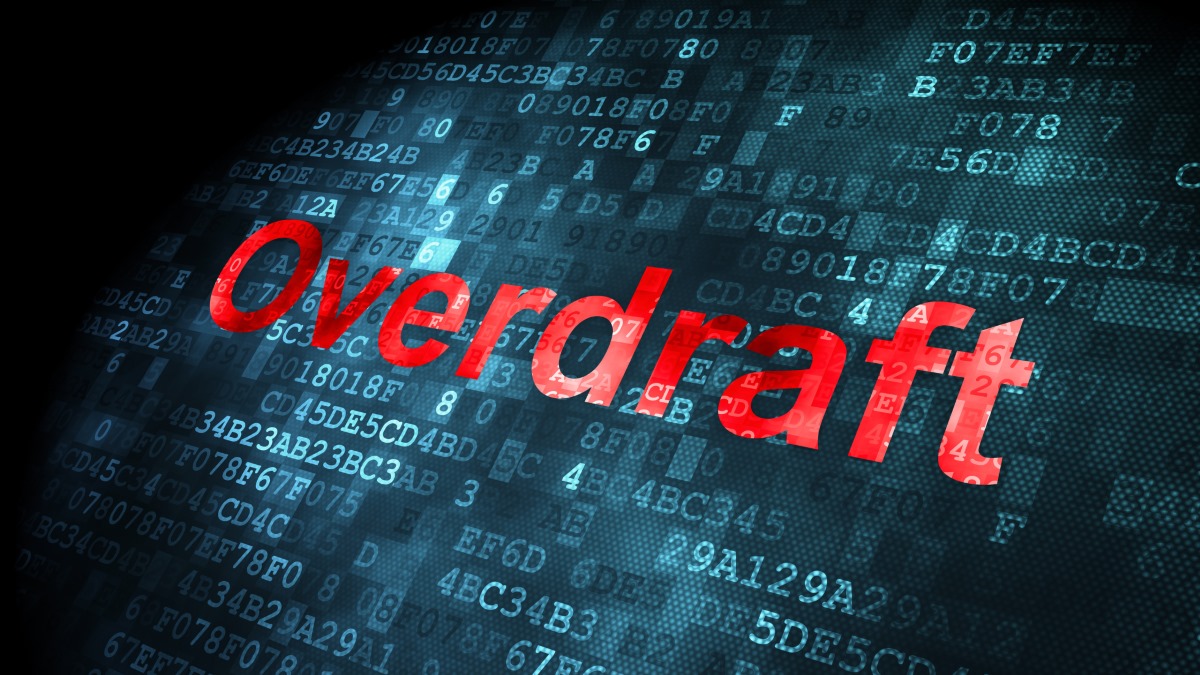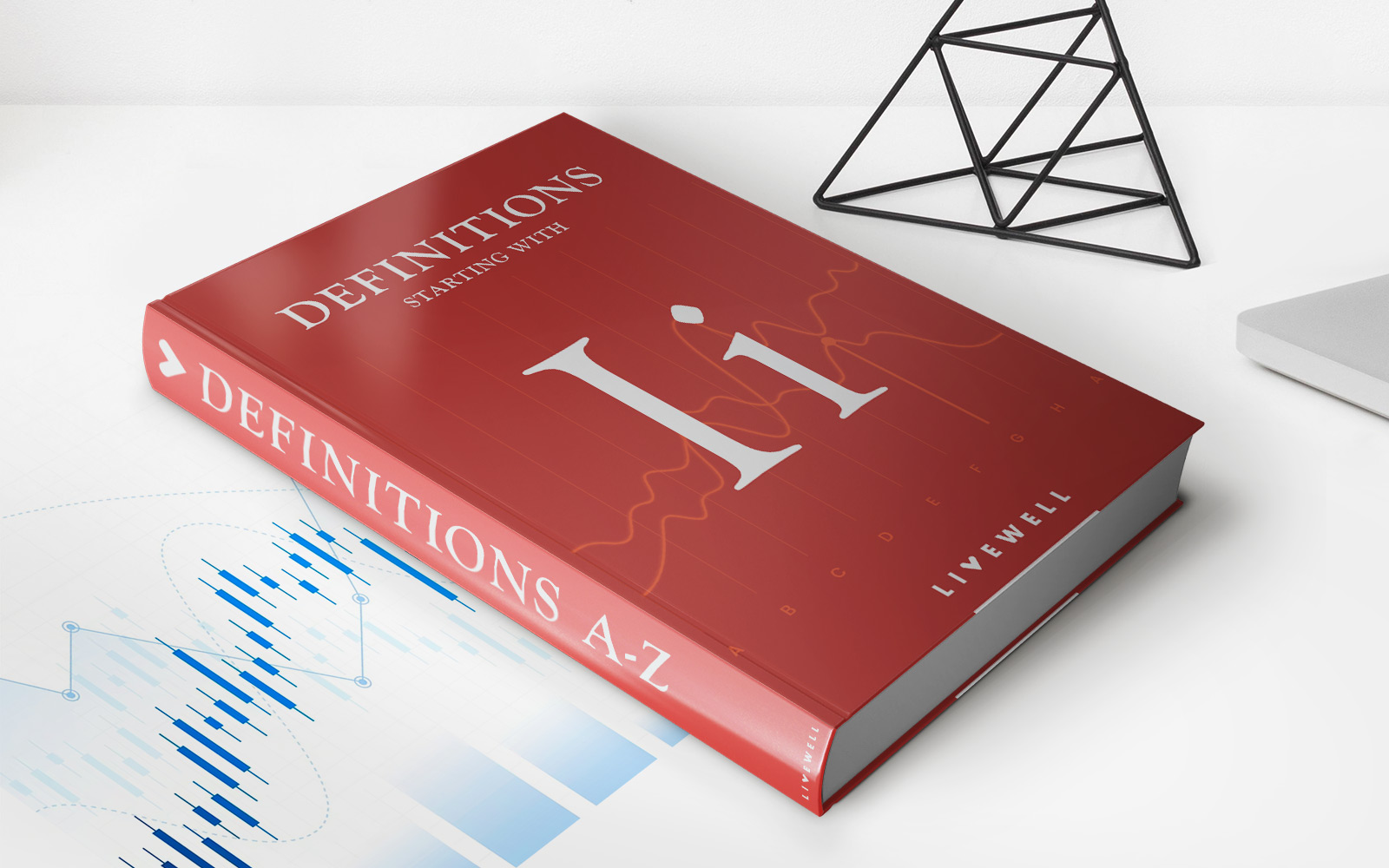

Finance
What Is A Reserve Line Of Credit
Published: January 13, 2024
Learn about reserve lines of credit in finance and how they can help you manage your finances more effectively.
(Many of the links in this article redirect to a specific reviewed product. Your purchase of these products through affiliate links helps to generate commission for LiveWell, at no extra cost. Learn more)
Table of Contents
- Introduction
- Definition of a Reserve Line of Credit
- How Does a Reserve Line of Credit Work?
- Benefits of a Reserve Line of Credit
- Limitations of a Reserve Line of Credit
- How to Qualify for a Reserve Line of Credit
- Factors to Consider Before Applying for a Reserve Line of Credit
- Examples of Reserve Line of Credit Usage
- Conclusion
Introduction
When it comes to managing finances, having access to credit can be a valuable tool. Whether it’s for unexpected expenses, business investments, or bridging the gap between paychecks, credit provides the flexibility to meet financial needs. One such form of credit that offers a unique advantage is a reserve line of credit.
A reserve line of credit is a financial arrangement that allows individuals or businesses to access a predetermined amount of credit when needed. It provides a safety net for unforeseen expenses or periods of cash flow uncertainty. Unlike a traditional loan, a reserve line of credit works more like a revolving credit facility, where funds can be drawn and repaid as needed, up to the approved limit.
Reserve lines of credit are typically offered by financial institutions, such as banks or credit unions, to borrowers who meet certain eligibility criteria. The terms and conditions, including interest rates, repayment terms, and credit limits, can vary depending on the lender and the borrower’s creditworthiness.
In this article, we will explore the concept of a reserve line of credit in more detail. We will discuss how it works, the benefits it offers, and the limitations to consider. Additionally, we will provide guidance on qualifying for a reserve line of credit and offer some examples of how it can be utilized to meet financial needs effectively.
Understanding the ins and outs of a reserve line of credit can help individuals and businesses make informed decisions about their financial strategies. With the right knowledge and careful consideration, a reserve line of credit can be an invaluable tool to help navigate financial challenges and seize opportunities.
Definition of a Reserve Line of Credit
A reserve line of credit is a form of credit that provides borrowers with access to funds up to a predetermined limit. It serves as a safety net or financial cushion for individuals or businesses, allowing them to tap into these funds when needed. The reserve line of credit functions similarly to a credit card, but with higher credit limits and often lower interest rates.
Unlike a traditional loan, where a lump sum is disbursed upfront, a reserve line of credit offers flexibility in terms of borrowing and repaying. Instead of receiving the entire amount at once, borrowers can decide when and how much of the available credit they want to use. They only pay interest on the portion of credit utilized, not on the entire credit limit.
The reserve line of credit operates on a revolving credit basis, meaning that as borrowers repay the borrowed funds, the credit becomes available for use again. This flexibility allows for multiple borrowing and repayment cycles throughout the duration of the credit line.
One key aspect of a reserve line of credit is that it is typically unsecured, meaning borrowers are not required to provide collateral to secure the credit. Instead, approval is based on the borrower’s creditworthiness and their ability to repay the borrowed funds. This can be advantageous for individuals or businesses that may not have significant assets to pledge as collateral.
It’s important to note that reserve lines of credit are different from traditional lines of credit, such as home equity lines of credit (HELOCs). While HELOCs are secured by the borrower’s home, reserve lines of credit do not require collateral. However, the interest rates on reserve lines of credit may be higher compared to HELOCs due to the increased risk for lenders.
In summary, a reserve line of credit offers borrowers the flexibility to access funds up to a predetermined limit as needed. It operates on a revolving credit basis and is typically unsecured, making it an attractive option for individuals or businesses looking for financial flexibility and a safety net for unexpected expenses.
How Does a Reserve Line of Credit Work?
A reserve line of credit works similarly to a credit card or a traditional line of credit. Once approved, borrowers have access to a predetermined amount of credit that they can draw from as needed. Here’s a step-by-step breakdown of how a reserve line of credit works:
- Application and Approval: To obtain a reserve line of credit, individuals or businesses must fill out an application with a financial institution. The lender will evaluate the borrower’s creditworthiness, income, and other factors before approving or denying the application.
- Credit Limit: Once approved, borrowers will be assigned a credit limit, which represents the maximum amount of credit they can access through the reserve line of credit.
- Availability of Funds: The reserve line of credit provides borrowers with the ability to access funds by either transferring money to their bank account or using a specific credit card tied to the credit line. Some lenders may also provide checks or allow online transfers.
- Borrowing: Borrowers can withdraw funds from the reserve line of credit as needed, up to the approved credit limit. They can use the funds for a variety of purposes, such as covering unexpected expenses, funding business initiatives, or supplementing cash flow during slow periods.
- Repayment: As borrowers use the credit, they are required to make monthly minimum payments, which typically include the interest accrued on the outstanding balance. However, borrowers can choose to repay more than the minimum to reduce interest charges and pay off the debt faster.
- Revolving Credit: Unlike a traditional loan, once borrowers repay the borrowed funds, the credit becomes available for use again. This revolving nature of the reserve line of credit allows borrowers to repeatedly borrow and repay throughout the duration of the credit line, as long as it remains open.
- Interest Charges: Borrowers are charged interest on the outstanding balance of the reserve line of credit, typically on a monthly basis. The interest rate can vary depending on the lender and the borrower’s creditworthiness. It’s important to carefully consider the interest rate, as higher rates can significantly increase the cost of borrowing.
- Account Monitoring: Lenders may require periodic account reviews to ensure that borrowers are using the credit responsibly. This involves assessing the borrower’s creditworthiness, reviewing financial statements, and evaluating any changes in circumstances that may affect the borrower’s ability to repay the credit.
- Closure of the Credit Line: Borrowers can choose to close the reserve line of credit when they no longer need it. This usually involves repaying the outstanding balance in full and notifying the lender of their intention to close the account. It’s important to understand any potential fees or penalties associated with closing the credit line.
Understanding how a reserve line of credit works can help borrowers make informed decisions and effectively manage their finances. By utilizing the credit responsibly, borrowers can take advantage of the flexibility and financial cushion it provides while minimizing interest charges and maintaining a healthy credit profile.
Benefits of a Reserve Line of Credit
A reserve line of credit offers several benefits for individuals and businesses. Here are some of the key advantages of utilizing a reserve line of credit:
- Flexibility: One of the primary benefits of a reserve line of credit is the flexibility it provides. Borrowers have the freedom to access funds as needed, up to the approved credit limit. This flexibility allows individuals and businesses to handle unexpected expenses or take advantage of time-sensitive opportunities without the need for a lengthy loan application process.
- Financial Safety Net: A reserve line of credit acts as a financial safety net, providing a cushion for unforeseen expenses or fluctuations in cash flow. It offers peace of mind knowing that there is a readily available source of credit to cover unexpected costs, avoiding the need to deplete savings or disrupt other financial plans.
- Lower Interest Charges: Compared to credit cards or other high-interest loans, reserve lines of credit often come with lower interest rates. This can result in significant savings in interest charges over time, especially if borrowers manage the credit responsibly and pay off the outstanding balance promptly.
- Revolving Credit: The revolving nature of a reserve line of credit allows for repeated borrowing and repayment throughout the duration of the credit line. This can be advantageous for businesses that have fluctuating cash flow or individuals who require occasional access to additional funds. As long as borrowers make the minimum monthly payments and stay within the credit limit, they can continue to borrow and repay funds as needed.
- Improving Credit Score: Responsible use of a reserve line of credit can help improve the borrower’s credit score. By making timely payments and demonstrating the ability to manage credit effectively, borrowers can enhance their creditworthiness and potentially qualify for better loan terms and interest rates in the future.
- Convenience: Having a reserve line of credit offers convenience, as borrowers can access funds quickly and easily. Whether it’s through online banking transfers, checks, or a credit card tied to the credit line, the accessibility of funds provides convenience in managing financial obligations or seizing opportunities without delay.
It’s important to note that while a reserve line of credit offers numerous benefits, responsible usage is paramount to maximize its advantages. Borrowers should carefully consider their financial needs, diligently manage the credit, and make payments on time to avoid incurring unnecessary debt or damaging their credit score.
In summary, a reserve line of credit offers flexibility, financial security, and potential cost savings through lower interest charges. Its revolving nature accommodates changing financial needs, while responsible use can lead to an improved credit profile. When used wisely, a reserve line of credit can be an invaluable financial tool for individuals and businesses alike.
Limitations of a Reserve Line of Credit
While a reserve line of credit offers many benefits, it’s important to be aware of its limitations. Understanding these limitations can help borrowers make informed decisions and avoid potential pitfalls. Here are some of the key limitations to consider:
- Approval Criteria: Obtaining a reserve line of credit typically requires meeting certain eligibility criteria, including a good credit score and a stable income. Borrowers with poor credit or inconsistent income may struggle to qualify for a reserve line of credit, limiting their access to this financial tool.
- Interest Rates: While reserve lines of credit may offer lower interest rates compared to credit cards, they tend to have higher rates than secured loans, such as home equity lines of credit. It’s essential to carefully evaluate the interest rate offered by the lender and determine the overall cost of borrowing before committing to a reserve line of credit.
- Overborrowing: With the convenience and availability of funds, there is a risk of overborrowing. Borrowers may be tempted to utilize the full credit limit without considering their repayment ability or the potential impact on their financial well-being. It’s crucial to exercise discipline and only borrow what is truly necessary and affordable to repay.
- Fees and Charges: Lenders may impose various fees and charges associated with a reserve line of credit, such as annual fees, cash advance fees, or late payment fees. It’s important to carefully review the terms and conditions and understand the potential fees associated with the credit. These fees can increase the overall cost and should be factored into the borrowing decision.
- Overspending: The accessibility of a reserve line of credit can tempt borrowers to overspend or make impulsive purchases. It’s crucial to maintain disciplined financial habits and use the credit responsibly. Creating a budget and sticking to it can help ensure that the credit is used for necessary expenses and not for unnecessary or frivolous purchases.
- Risk of Default: Mismanaging a reserve line of credit can lead to financial difficulties and ultimately defaulting on the credit. Defaulting on the credit can severely damage credit scores and make it challenging to secure future loans or credit. It’s crucial to borrow within one’s means and make timely payments to avoid the risk of default.
By understanding the limitations of a reserve line of credit, borrowers can make informed decisions and use the credit responsibly. Careful consideration of these limitations, along with a realistic assessment of one’s financial situation, can help borrowers avoid potential pitfalls and make the most out of the benefits offered by a reserve line of credit.
How to Qualify for a Reserve Line of Credit
Qualifying for a reserve line of credit requires meeting specific criteria set by the lender. While these criteria may vary among different financial institutions, there are common factors that lenders consider when evaluating applications. Here are some key steps to increase your chances of qualifying for a reserve line of credit:
- Maintain a Good Credit Score: Lenders typically review applicants’ credit scores to assess their creditworthiness. A higher credit score demonstrates responsible credit management and increases the likelihood of approval. Make sure to review your credit report regularly, correct any errors, and make timely payments to maintain a good credit score.
- Show Stable Income: Lenders want assurance that borrowers have the means to repay the borrowed funds. Providing evidence of a stable income, such as employment or a steady business, can strengthen your application. Lenders may request pay stubs, tax returns, or business financial statements to evaluate your income stability.
- Reduce Debt-to-Income Ratio: Lenders consider the borrower’s debt-to-income ratio, which compares their monthly debt obligations to their income. A lower debt-to-income ratio indicates better financial stability and increases the chances of approval. Consider paying off existing debts or reducing your monthly debt obligations before applying for a reserve line of credit.
- Establish a Relationship with the Lender: If you have an existing relationship with a financial institution, such as a checking or savings account, it can work in your favor. Lenders may view this as a sign of stability and loyalty, increasing the likelihood of approval. Consider applying for a reserve line of credit with the institution where you have a banking relationship.
- Provide Collateral (if Required): While reserve lines of credit are typically unsecured, some lenders may require collateral, especially for higher credit limits. Collateral can be in the form of real estate, investment accounts, or other valuable assets. Offering collateral can mitigate the lender’s risk and improve your chances of approval.
- Prepare Necessary Documents: Ensure that you have all the necessary documentation ready when applying for a reserve line of credit. This may include personal identification documents, financial statements, tax returns, and proof of income. Having these documents organized and readily available will streamline the application process and demonstrate your preparedness.
It’s important to remember that meeting the qualifications does not guarantee approval for a reserve line of credit. Each lender has its own underwriting process and may consider additional factors beyond those listed above. Additionally, it’s crucial to borrow responsibly and only take on credit that you can comfortably afford to repay.
Before applying for a reserve line of credit, it may be helpful to research different lenders, compare their offerings, and assess your own financial situation. By understanding the qualification requirements and taking proactive steps to strengthen your financial profile, you can improve your chances of qualifying for a reserve line of credit and accessing the funds you need.
Factors to Consider Before Applying for a Reserve Line of Credit
Before applying for a reserve line of credit, it’s important to carefully consider several factors to ensure that it is the right financial solution for your needs. Taking the time to evaluate these factors can help you make an informed decision and avoid potential pitfalls. Here are some key factors to consider:
- Financial Need: Assess your financial situation and determine if a reserve line of credit is necessary. Consider if you have a specific need for a flexible credit line to cover unexpected expenses or to supplement cash flow during certain periods.
- Repayment Capability: Evaluate your ability to repay the borrowed funds. Calculate the monthly payments based on different borrowing scenarios and consider how they fit into your budget. Ensure that you can comfortably afford the payments without straining your finances.
- Interest Rates and Fees: Compare interest rates and fees among different lenders offering reserve lines of credit. Pay close attention to annual fees, cash advance fees, and any other charges associated with the credit. Understanding the total cost of borrowing will help you choose the most cost-effective option.
- Credit Limit: Consider the credit limit that is being offered. Assess whether the approved credit limit is adequate for your needs and if it provides enough flexibility to meet your financial requirements.
- Repayment Terms: Review the repayment terms of the reserve line of credit. Understand the minimum monthly payments, repayment period, and any penalties for late payments or early repayment. Make sure the terms align with your financial goals and capabilities.
- Impact on Credit Score: Borrowing through a reserve line of credit can impact your credit score. Late or missed payments can negatively affect your creditworthiness. Conversely, responsible usage and timely payments can improve your credit score. Consider how borrowing through a reserve line of credit can impact your credit profile in the long term.
- Change in Interest Rates: Interest rates on reserve lines of credit may be variable, meaning they can fluctuate over time. Consider the potential impact of interest rate changes on your monthly payments and the overall cost of borrowing. Analyze your financial stability and ability to handle potential increases in interest rates.
- Borrowing Discipline: Assess your borrowing discipline and financial habits. Determine if you have the self-control to use the reserve line of credit responsibly, avoiding unnecessary or impulsive spending. It’s important to use the credit only for essential expenses or investments that can offer a positive financial return.
- Alternative Financing Options: Consider alternative financing options available to you, such as personal loans, credit cards, or business lines of credit. Compare the terms, rates, and benefits of these alternatives with a reserve line of credit to determine which option best suits your specific needs.
By carefully considering these factors, you can make an informed decision when applying for a reserve line of credit. It’s crucial to choose a credit product that aligns with your financial goals, offers favorable terms, and fits within your overall financial plan. Responsible borrowing and diligent repayment will help you make the most of the advantages of a reserve line of credit while minimizing the associated risks.
Examples of Reserve Line of Credit Usage
A reserve line of credit can be utilized in various ways to meet different financial needs. Here are a few examples of how individuals and businesses can use a reserve line of credit:
- Emergency Expenses: Unforeseen circumstances, such as medical bills or home repairs, can put a strain on finances. A reserve line of credit can provide immediate funds to cover these unexpected expenses, offering peace of mind and preventing the need to deplete savings or rely on high-interest credit cards.
- Business Cash Flow: Small businesses often experience fluctuations in cash flow due to seasonality or unexpected expenses. A reserve line of credit can act as a safety net, allowing business owners to bridge the gap during slow periods or cover immediate expenses while awaiting payment from clients.
- Opportunity Investments: A reserve line of credit can provide individuals or businesses with the means to seize valuable investment opportunities. Whether it’s purchasing discounted inventory, acquiring equipment, or funding a business expansion, the credit line can offer the necessary funds to capitalize on time-sensitive ventures.
- Education or Training: Pursuing further education or professional training can require significant upfront costs. A reserve line of credit can assist individuals in covering tuition fees, purchasing textbooks, or funding other educational expenses, allowing them to invest in their personal or career development.
- Consolidating High-Interest Debt: If you have multiple high-interest debts, such as credit card balances, a reserve line of credit can be used to consolidate these debts into one account with a lower interest rate. This strategy can help save on interest charges and simplify debt repayment with a single monthly payment.
- Home Renovations: Renovating or remodeling a home can be expensive. A reserve line of credit can finance home improvement projects, helping homeowners enhance their living spaces, increase property value, and create their dream homes.
- Travel Expenses: Traveling can be costly, with expenses including flights, accommodations, and activities. A reserve line of credit can provide the necessary funds for a dream vacation or cover unexpected travel expenses, offering flexibility and convenience for memorable experiences.
These examples highlight the versatility of a reserve line of credit. Depending on individual circumstances and financial goals, the credit can be used to address various needs and seize opportunities. It’s important to remember that responsible usage and diligent repayment are essential to fully benefit from a reserve line of credit and avoid excessive debt.
Consider your own financial objectives and evaluate how a reserve line of credit can help you achieve them. Consult with financial advisors or lenders to determine the best way to utilize the credit line based on your specific situation and goals. By using the credit wisely, you can leverage the advantages of a reserve line of credit to enhance your financial well-being and accomplish your objectives.
Conclusion
A reserve line of credit can be a valuable financial tool for individuals and businesses seeking flexibility and access to credit. With the ability to borrow and repay funds as needed, a reserve line of credit offers convenience, financial security, and potential cost savings. However, it’s crucial to carefully consider various factors before applying for a reserve line of credit.
Understanding the qualifications, interest rates, repayment terms, and limitations associated with a reserve line of credit is essential to make an informed decision. Assessing your financial needs, repayment capability, and borrowing discipline can help determine if a reserve line of credit aligns with your goals and financial situation.
By utilizing a reserve line of credit responsibly, borrowers can take advantage of the flexibility and financial cushion it provides. It can be used to cover unexpected expenses, bridge cash flow gaps, seize investment opportunities, or consolidate high-interest debt. Responsible borrowing and timely repayment are essential to avoid excessive debt and maintain a healthy credit profile.
It’s important to compare offers from different lenders, assess your own financial stability, and carefully review the terms and conditions to obtain the most suitable reserve line of credit for your needs. Consulting with financial advisors or lenders can provide valuable guidance and help you make a well-informed decision.
In conclusion, a reserve line of credit can serve as a valuable financial tool, providing individuals and businesses with the flexibility and security to manage their financial needs effectively. By understanding the concept, evaluating the pros and cons, and using the credit responsibly, borrowers can leverage the benefits of a reserve line of credit to navigate financial challenges, seize opportunities, and achieve their long-term financial goals.














